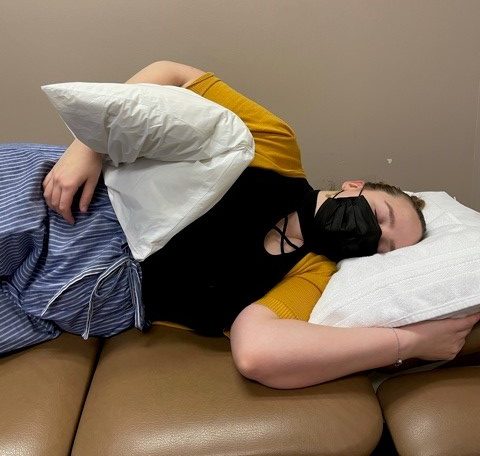Sleep
It is one of the most crucial activities of daily living (ADL). We all rely on sleep in order to recharge and revitalize our mind and body. Achieving at least 8 hours of quality sleep helps us to be ready for the challenges of the new day. However, a lack of sleep may have a tremendous impact on how we go about our day. In fact, poor sleep can negatively affect our attention, problem-solving skills, and overall cognitive function, leading to poor performance with even the simplest ADL’s. The following post will outline tips for comfortable sleeping after shoulder surgery.
Comfortable Sleeping after Shoulder Surgery
Sleeping Positions
If you already had trouble sleeping before, it can be compounded twice over if you have had shoulder surgery. Surgeries can include joint replacement, rotator cuff repair, or a fractured bone. Sleeping with a healing shoulder is often one of the most difficult ADL tasks to perform. This is due to a variety of reasons. One obvious reason (of course) being pain associated with a recent surgery and your sleeping habits prior to the surgery. If you were an avid side sleeper, it may be difficult to suddenly change that habit to avoid sleeping on the your surgery side. If you are a stomach sleeper, you may be hard-pressed to sleep on your back. You may have been told that sleeping on your stomach is the least ideal sleeping position. This is particularly true when it comes to the shoulder. This is because stomach sleeping often positions the arms above the head, putting undue tension on the shoulder.
Comfortable Sleeping After Shoulder Surgery – Strategies
The first few weeks are often the most challenging when trying to sleep after a shoulder surgery. Your doctor may prescribe you a shoulder sling to wear while sleeping, which may feel cumbersome. However, it is important to ensure that shoulder is placed in a protected position. This allows the appropriate healing to occur without causing stress to the repair. There will come a time when your doctor informs you that it is safe to discontinue the use of the sling. This does not guarantee that sleeping on the surgical side will be comfortable. Here are a few strategies you may use to adapt your positioning to get the most amount of quality sleep possible.
Tip #1
First, try sleeping in a reclined position. This is a great technique when you are fresh from a surgery and experiencing swelling and discomfort. Sleeping in a reclined position will reduce the load on your entire shoulder girdle. This will redirect more of gravity’s pull towards your center of mass, which is at your hips.
Tip #2
Second, sleep on your back or on the non-surgical side. If sleeping on your back is uncomfortable, try the following: prop a pillow under the blade of the affected shoulder, while hugging a second pillow (Photo 1). If you are sleeping on your non-surgical side without the sling, it may help to place a pillow under the affected arm. This will prevent the shoulder from resting in a forward posture (Photo 2).


Tip #3
Third, wear the abductor pillow. This pillow is attached to your sling and rests against your hip in order to prop the shoulder away from the body. This is known as an open-pack position, where the joint is the most relaxed and receives good blood and nutrient flow. If you are no longer wearing the sling, then you can place a pillow underneath your armpit. If the pillow does not feel thick enough, fold it in half (Photo 3).

Tip #4
If it seems like you have exhausted all of these options and still find yourself sleeping on the affected shoulder, do not despair. There is hope! This strategy is simple but requires multiple pillows. Avoid this position until you are further along in your rehab and it is okay with your doctor to sleep on the affected side. You will need at least 3-4 pillows that are nice and firm. While laying on your side, place one pillow under your rib cage, and one at your head. You should have an open channel between the two pillows in which you may rest your shoulder in. The weight will be distributed between the two pillows, reducing the load on your shoulder. However, if you still feel uncomfortable, then try propping an additional pillow behind your back and gently lean into it (Photo 4).

In Summary
Sleeping is vital to our everyday life. Trying different strategies to enhance your quality of sleep is key to getting the rest you need while healing from a surgery. If you feel like you require additional support, try using a large, rolled up towel as an alternative strategy. There are also multiple pillow options available online for post-shoulder surgery. Whatever you do, never neglect the sleep that you need! We hope these tips for comfortable sleeping after shoulder surgery have helped you.
If you would like more information or are ready to schedule your post-surgery rehabilitation, please call our office to set up an appointment.
Written By: Daniel Jackson OTD, OTR/L


